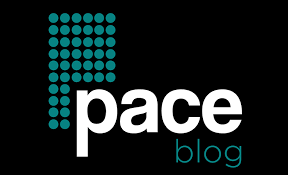Network discovery tools are essential for identifying and mapping devices on a network. These tools scan networks to detect active devices, their IP addresses, and associated services. The network discovery tool helps in creating a network inventory, assessing network performance, and detecting unauthorized devices. Common features include automatic topology mapping, vulnerability assessment, and configuration management. By providing insights into network architecture and traffic patterns, these tools aid in troubleshooting, optimizing performance, and enhancing security. Popular network discovery tools include Nmap, Wireshark, and SolarWinds Network Performance Monitor, each offering unique functionalities to support network management and security.

Understanding Network Discovery
Network discovery is the process of identifying and mapping out devices, services, and resources on a network. It involves scanning the network to detect devices such as computers, printers, and routers, and gathering information about their IP addresses, hostnames, and network interfaces. This process is crucial for network management, security, and optimization. By understanding network topology and detecting new or unauthorized devices, administrators can enhance network performance and protect against potential threats. Tools for network discovery include ping sweeps, port scans, and specialized software that provide detailed insights into network configurations and connectivity.
Why is Network Discovery Essential?
Network discovery is essential because it provides a comprehensive view of the devices and services on a network, enabling better management and security. By identifying all connected devices, administrators can detect unauthorized devices, potential vulnerabilities, and performance issues. This visibility helps in optimizing network performance, managing resources efficiently, and ensuring that security policies are enforced. Regular network discovery also aids in compliance with regulations and helps in troubleshooting network problems quickly. In summary, network discovery is crucial for maintaining a secure, efficient, and well-managed network environment.
Key Features of a Network Discovery Tool
A network discovery tool offers several key features that enhance network management and security. It automatically scans and maps the network, identifying all connected devices and their attributes. This includes IP addresses, device types, operating systems, and network connections. The tool provides real-time updates and alerts for network changes or unauthorized devices, aiding in proactive management. It often includes vulnerability assessment capabilities, helping to identify potential security risks. Additionally, comprehensive reporting and visualization features assist in understanding network topology and performance. Integration with other network management systems and customizable discovery schedules further enhance its utility and effectiveness.
Automatic Device Detection
Automatic device detection is a technology that identifies and configures devices connected to a network or system without requiring manual input. This process involves scanning the network for connected hardware, recognizing their type and capabilities, and applying the appropriate settings or drivers. It streamlines device management, enhances user convenience, and minimizes errors associated with manual configuration. This technology is widely used in various applications, including operating systems, network management tools, and hardware interfaces, to ensure seamless integration and optimal performance. Automatic device detection is crucial for maintaining efficient workflows and reducing the need for technical intervention.
Comprehensive Asset Inventory
A Comprehensive Asset Inventory is a detailed record of an organization’s assets, encompassing physical items like equipment and machinery, as well as intangible assets such as intellectual property and digital resources. This inventory serves as a critical tool for managing and optimizing asset utilization, ensuring compliance with regulations, and supporting financial reporting. It typically includes information on asset location, condition, value, and ownership. Regular updates and audits are essential to maintain accuracy and support strategic decision-making. By systematically cataloging assets, organizations can enhance operational efficiency, minimize risks, and better align asset management with business objectives.
Network Topology Mapping
Network topology mapping involves creating a visual representation of a network’s structure, showing how various devices, nodes, and connections interact within the system. It helps in understanding the arrangement of hardware components, such as routers, switches, and computers, and how they are interconnected. By mapping the topology, network administrators can identify potential bottlenecks, optimize performance, and troubleshoot issues more effectively. Various types of network topologies, such as star, ring, mesh, and bus, can be represented. Accurate mapping is crucial for maintaining network efficiency, ensuring security, and planning for future expansions or modifications.
Vulnerability Assessment
A vulnerability assessment is a systematic process designed to identify and evaluate weaknesses within an organization’s IT infrastructure, applications, and networks. This assessment involves scanning systems for known vulnerabilities, misconfigurations, and other security gaps that could be exploited by attackers. The goal is to provide a comprehensive understanding of potential risks, prioritize them based on their severity, and recommend appropriate mitigation strategies. By addressing identified vulnerabilities, organizations can bolster their defenses, enhance security posture, and protect sensitive data from breaches. Regular vulnerability assessments are crucial for adapting to evolving threats and maintaining robust cybersecurity measures.
Integration with Other IT Tools
Integration with other IT tools enhances efficiency and data coherence within an organization. By linking disparate systems such as CRM, ERP, and project management software, businesses can streamline workflows and ensure real-time data synchronization. This connectivity facilitates automated data transfers, reduces manual entry errors, and provides a unified view of information. For instance, integrating a marketing platform with a sales CRM allows for seamless tracking of customer interactions and campaign effectiveness. Effective integration also supports better decision-making through consolidated reporting and analytics. Ultimately, leveraging interconnected IT tools helps optimize processes, improve productivity, and drive overall business performance.
How to Choose the Right Network Discovery Tool
Choosing the right network discovery tool involves evaluating several key factors. First, consider the tool’s ability to automatically detect and map network devices, which is crucial for maintaining an up-to-date network inventory. Assess its compatibility with your network’s architecture and protocols. Look for features like real-time monitoring, alerting capabilities, and integration with existing security solutions. User-friendliness and scalability are also important—ensure the tool can grow with your network and is easy to operate. Finally, consider cost and support options. A well-rounded tool should offer a balance between comprehensive functionality and budget constraints, ensuring efficient network management.
Factors to Consider
When evaluating options or making decisions, several factors should be considered. First, assess the potential impact on your goals and priorities. Financial implications are crucial; ensure you understand costs and benefits. Evaluate the risks and uncertainties involved. Consider the time required for implementation and whether it aligns with your schedule. Analyze how the decision affects stakeholders and relationships. Additionally, review any legal or ethical implications. Finally, gather input from trusted advisors or experts to gain different perspectives. Balancing these factors helps ensure a well-rounded and informed choice that aligns with your objectives and values.
Cost-Effectiveness
Cost-effectiveness refers to the evaluation of the financial efficiency of a strategy or solution in achieving desired outcomes. It compares the relative costs of different methods or interventions and assesses their impact in terms of results or benefits gained. In decision-making, cost-effectiveness analysis helps determine which option provides the best value for the investment, balancing cost with effectiveness. This approach is commonly used in healthcare, business, and public policy to ensure resources are allocated efficiently. By analyzing both costs and outcomes, cost-effectiveness helps stakeholders make informed choices that maximize benefits while minimizing unnecessary expenses.
Benefits of Using Total Network Inventory
Total Network Inventory offers numerous benefits for managing IT assets efficiently. It provides a comprehensive overview of network components, including hardware, software, and connected devices, ensuring accurate and up-to-date information. This enables streamlined inventory management, simplifies compliance with licensing agreements, and facilitates proactive maintenance by identifying potential issues before they escalate. The tool also enhances security by tracking unauthorized devices and vulnerabilities, while detailed reporting and analysis support informed decision-making and strategic planning. By automating data collection and reporting, Total Network Inventory saves time, reduces manual errors, and improves overall operational efficiency.
Integration with Existing Systems
Integration with existing systems is crucial for ensuring seamless functionality and data coherence across various platforms. It involves aligning new solutions with current software, databases, and workflows to enhance efficiency and minimize disruption. Effective integration requires a clear understanding of existing systems’ architecture and data structures. Tools such as APIs, middleware, and data connectors are often employed to facilitate this process. Proper integration helps in maintaining data accuracy, streamlining operations, and enabling real-time information sharing. Additionally, it allows organizations to leverage their current investments while adopting new technologies, ultimately leading to improved overall performance and user satisfaction.

Common Challenges in Network Discovery and How to Overcome Them
Network discovery involves mapping out and understanding a network’s structure, but it comes with challenges. One common issue is network complexity, where diverse devices and configurations can obscure visibility. To address this, use automated discovery tools that provide comprehensive scanning and mapping. Another challenge is keeping up with dynamic changes, as networks constantly evolve. Implement regular scans and updates to ensure accuracy. Security concerns also arise, as network discovery can expose vulnerabilities. Mitigate this by integrating discovery tools with robust security practices, including access controls and encryption. Lastly, inadequate documentation can hinder discovery; maintain detailed records of network architecture and changes.

